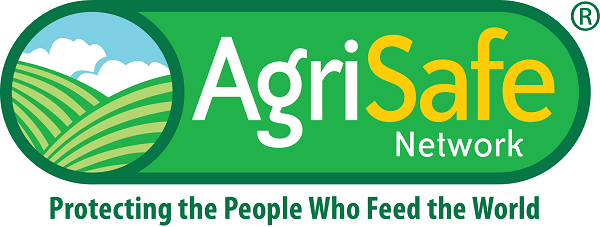AgriSafe Learning
On-Demand Webinars
-
Contains 3 Component(s)
For producers, spotting the first signs of a possible avian influenza outbreak can bring on a flood of stress, worry, and tough decisions. The emotional toll — before, during, and after flock depopulation — is real, and it affects everyone involved. So how do we recognize when someone’s struggling with all of this? And maybe more importantly, how do we show up for them — as coworkers and team members?
-
Register
- Non-member - Free!
- Member - Free!
- More Information
-
Register
-
Contains 5 Component(s), Includes Credits
Overdose deaths are a leading cause of injury-related death in the United States and the majority of overdose deaths involve opioids. This epidemic is impacting communities all across the country. Naloxone is a life-saving medication that can reverse an overdose from opioids when given in time. This session is designed to prepare communities and non-medical public and safety professionals to recognize and respond to an opioid overdose. Participants will learn the warning signs of opioid overdose and how to intervene safely using naloxone. Simultaneous interpretation in Spanish will be available for this webinar.
-
Register
- Non-member - Free!
- Member - Free!
- More Information
-
Register
-
Contains 4 Component(s), Includes Credits
This session will review the clinical features, specimen handling, epidemiologic clues, and reporting steps for New World screwworm myiasis so clinicians can recognize when to consider this rare but serious parasitic infestation, emphasizing that common wound etiologies remain far more likely and that screwworm should be a low-probability diagnosis except when compatible wounds, visible larvae, and recent travel/exposure to endemic areas are present.
-
Register
- Non-member - $30
- Member - Free!
- More Information
-
Register
-
Contains 3 Component(s)
Driving demands more than skill—it requires awareness, presence, and emotional control. This presentation explores how mindfulness practices can improve focus, reduce stress, and enhance safety on the road. Participants will learn how slow, intentional movements, calm breathing, and emotional regulation can help prevent reactive driving behaviors and fatigue-related crashes. The session also addresses the dangers of multitasking, drowsy driving, and “passive fatigue” caused by long, monotonous routes. Practical tools and take-home strategies—such as mindful breathing exercises, pre-drive check-ins, and healthy rest habits—equip drivers to stay alert and proactive. This session reminds participants that “Your mind and presence are your most important safety features.”
-
Register
- Non-member - Free!
- Member - Free!
- More Information
-
Register
-
Contains 3 Component(s), Includes Credits
ATVs and UTVs are widely used in rural areas but are a leading cause of injury and death, particularly on public roads where they are not designed to operate. Despite safety warnings, more communities are legalizing their use on roadways. This webinar explores the risks of on-road ATV/UTV use, design-related safety concerns, and strategies rural families can use to prevent crashes and injuries.
-
Register
- Non-member - Free!
- Member - Free!
- More Information
-
Register
-
Contains 3 Component(s), Includes Credits
Explore the leading causes of injuries and fatalities involving ATVs and UTVs in agricultural settings. Learn practical safety strategies and best practices to help prevent accidents and protect the agricultural community.
-
Register
- Non-member - Free!
- Member - Free!
- More Information
-
Register
-
Contains 3 Component(s), Includes Credits
Join AgriSafe for a dynamic and collaborative session focused on strengthening disaster response and recovery efforts in agricultural and rural communities. This think tank will explore existing resources, highlight critical gaps in infrastructure and preparedness, and facilitate a collective dialogue on how to build more resilient systems. Natural disasters can strike without warning, and being prepared can save lives, livelihoods, and communities. Your voice matters in shaping effective responses before, during, and after a disaster. We hope you’ll be part of the conversation
-
Register
- Non-member - Free!
- Member - Free!
- More Information
-
Register
-
Contains 3 Component(s), Includes Credits
During this webinar, we will explore the dangers of confined spaces in agriculture, including grain bins and manure pits, and the hazards involved in working with each.
-
Register
- Non-member - Free!
- Member - Free!
- More Information
-
Register
| Access Date | Quiz Result | Score | Actions |
|---|
Quick Search
Technical Difficulties
Submit a help ticket if you need technical assistance.
Having Computer Issues? Please check your internet browser and security settings to allow permissions for this website. Browsers: Microsoft Edge version 40 or higher; Chrome version 60 or higher, Firefox version 50 or higher; or Safari version 10.1 or higher. We recommend using Google Chrome or Firefox as your browser.
